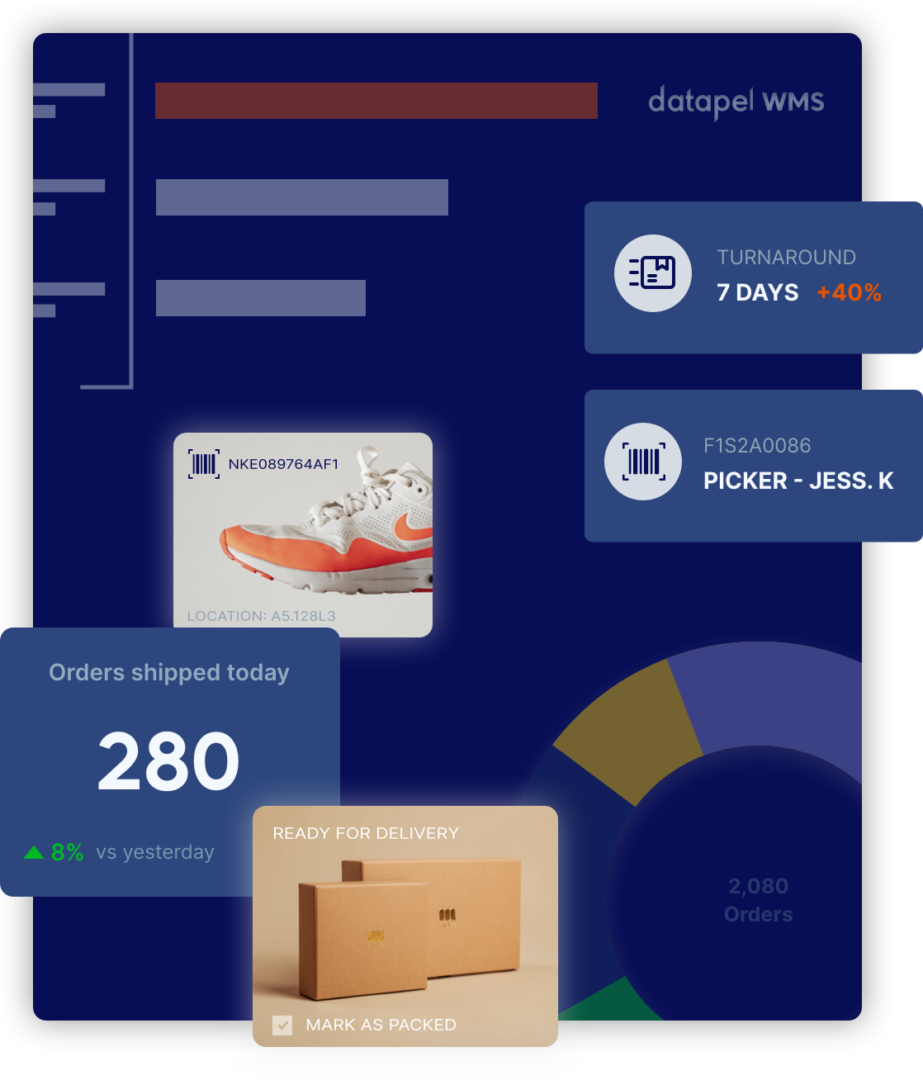Inventory Control Strategies Q2: 3 Ways to Strengthen Your Warehouse
In uncertain times, your inventory shouldn’t be a question mark.
From sudden supplier delays to unpredictable customer demand, warehouse teams across wholesale, manufacturing, retail, and food and beverage are seeing just how fragile inventory control can be. And once things start slipping — late orders, stockouts, slow picking — it’s easy to lose control of your warehouse.
The good news? You already have the tools to turn that around.
In Q2, let’s strengthen what you can control: your inventory processes. Here are three ways to build resilience using features that already exist in your Datapel system.
Inventory Control Strategies for Q2
1. Get Eyes on Everything with Real-Time Visibility

Improve visibility across warehouse zones and bin locations
If there’s one issue that cuts across every industry, it’s visibility.
Whether you’re dealing with raw materials in manufacturing, high-turnover products in retail, or batch-sensitive stock in health and pharma — not knowing what’s happening in your warehouse, in real time, causes small issues to spiral into big problems.
You might be:
- Picking from the wrong location
- Over-ordering on stock you already have
- Delaying dispatches while someone checks if a product “might be out the back”
🔧 How Datapel helps:
With real-time dashboards, location-based tracking, and live pick progress updates, Datapel gives your team instant access to accurate stock positions — across zones, bins, and even multiple warehouses.
If you haven’t yet activated:
- Barcode Scanning
- Bin location scanning
- Mobile picking
- Or stock transfer visibility across locations
…now’s the time to talk to your Customer Success contact.
Warehouse technology is advancing rapidly — from barcode automation to AI-powered systems. Learn more in this roundup of 2024 warehouse automation trends
“We used to spend hours trying to work out what was actually in stock. Now, with Datapel, we just know and that’s saved us from at least three missed orders this month.”
— National Food & Beverage Distributor, NSW
To explore more ways to improve visibility across warehouse zones and bin locations, check out our guide to stock control and warehouse efficiency.
2. Use Smarter Replenishment Alerts — Not Guesswork

Take the guesswork out of reordering with replenishment alerts
One of the biggest hidden costs in inventory management is poor replenishment timing.
Ordering too early can clog shelves and tie up cash — especially painful for wholesale distributors and retailers with fast-changing catalogues. Ordering too late? That leads to missed sales, backorders, and panicked warehouse teams.
The real issue? Most static reorder points don’t adapt to reality.
🔧 How Datapel helps:
Datapel lets you set:
- Custom low-stock thresholds per product or location
- Dynamic reorder rules that adapt to your sales velocity
- Automated alerts before you run into problems
That means you can:
- Order based on real-world movement, not estimates
- Account for supplier lead times or seasonal demand spikes
- Avoid both overstock and understock headaches
For industries like health and pharma, where compliance and expiry dates matter, replenishment can also be linked with batch tracking — ensuring you’re rotating stock correctly.
Want to dig deeper into your replenishment process? Take a look at our breakdown of the stock replenishment cycle for more ways to stay ahead.
Tip: If you’re still manually checking reorder levels, reach out to support for help setting up smarter alerts tailored to your SKUs.
3. Backorders Aren’t a Dead End — They’re a Workflow

Take the frustration our of backorders
Backorders can feel like a failure — but they don’t have to.
In many sectors, including manufacturing and furniture retail, backorders are a normal part of life. The key is managing them transparently — so that customers aren’t left in the dark and orders don’t fall through the cracks.
How Datapel helps:
Datapel gives you full control over the backorder lifecycle, allowing you to:
- Allocate new stock to existing backorders in priority order
- Send customers accurate ETAs based on incoming supplier shipments
- Keep sales, purchasing, and warehouse teams aligned — all in one system
“Just knowing what stock I have, where it is, and being able to reorder with a click — that keeps things simple. Customers get real-time updates on backorders and in-stock items. They get what they want, when they want it — and we trust Datapel to make that happen.”
— Managing Director, Furniture Manufacturer
Managing backorders well doesn’t just protect relationships — it gives you an edge. While others are reacting late, you’re staying in control.
Backorders are only a problem when you don’t have a clear system. Learn how to turn them into a strength in our post on how to avoid — and manage — backorders.
What Can You Strengthen This Quarter?
While you can’t prevent every disruption in Q2, you can control how your team responds — and that starts with the systems you already have.
Here’s a quick recap of what you can focus on now:
✅ Turn on real-time visibility features if they’re not already active — including bin locations, mobile pick, and stock transfers
✅ Review your reorder rules — are they dynamic and tied to current movement data?
✅ Check your backorder process — is it centralised and transparent, or still reliant on spreadsheets and guesswork?
If you’re unsure where to start — or feel like you’re not getting the most out of Datapel — we’re here to help. Reach out if you have any questions.

In my role, I oversee the development of insightful blogs that delve into the intricacies of warehouse management. Each piece reflects my dedication to empowering businesses through informative content. Through my team’s extensive experience in the industry, we aim to bring clarity to the complexities of WMS, helping businesses make informed decisions.
Join me on a journey through the ever-evolving landscape of warehouse technology as we explore the latest trends, industry insights, and practical tips to streamline your operations. Feel free to connect, and let’s embark on a collaborative exploration of how WMS can redefine your business efficiency.
Cheers to innovation, efficiency, and the exciting world of warehouse management!







